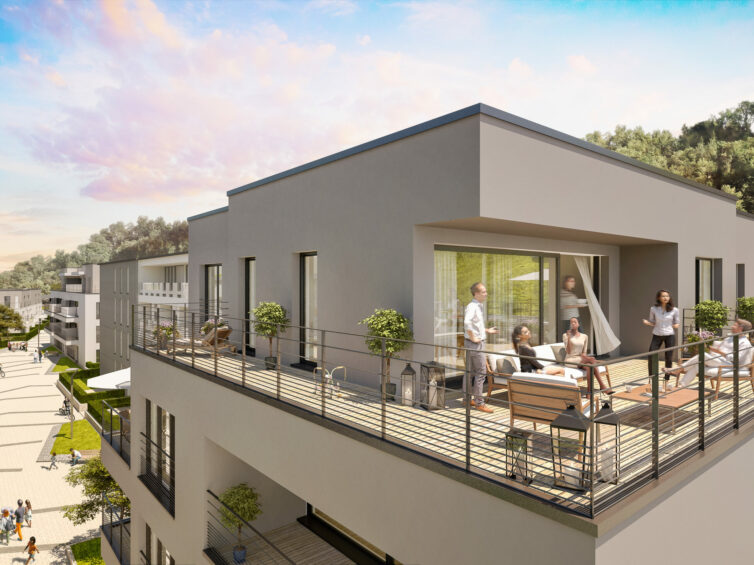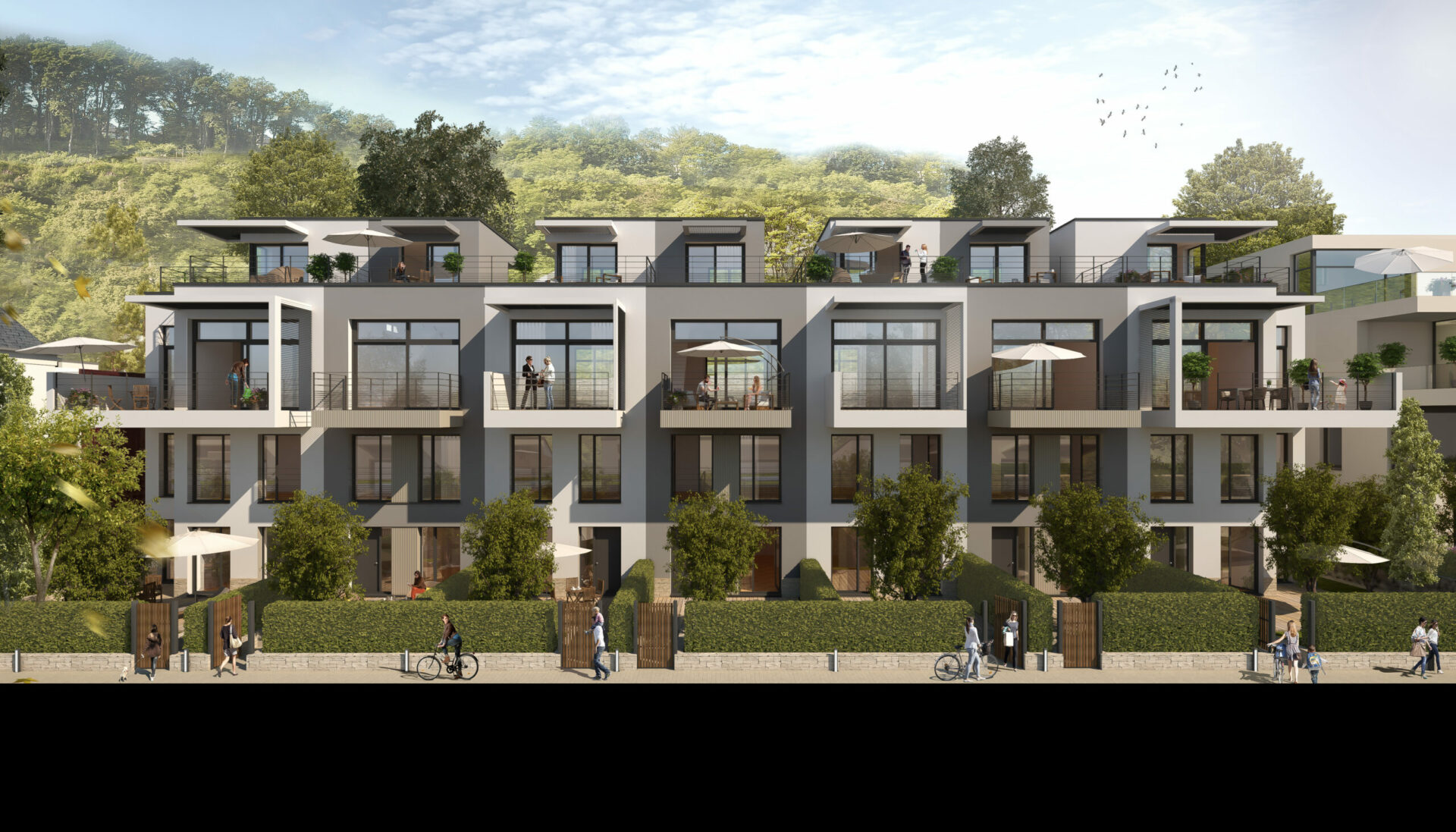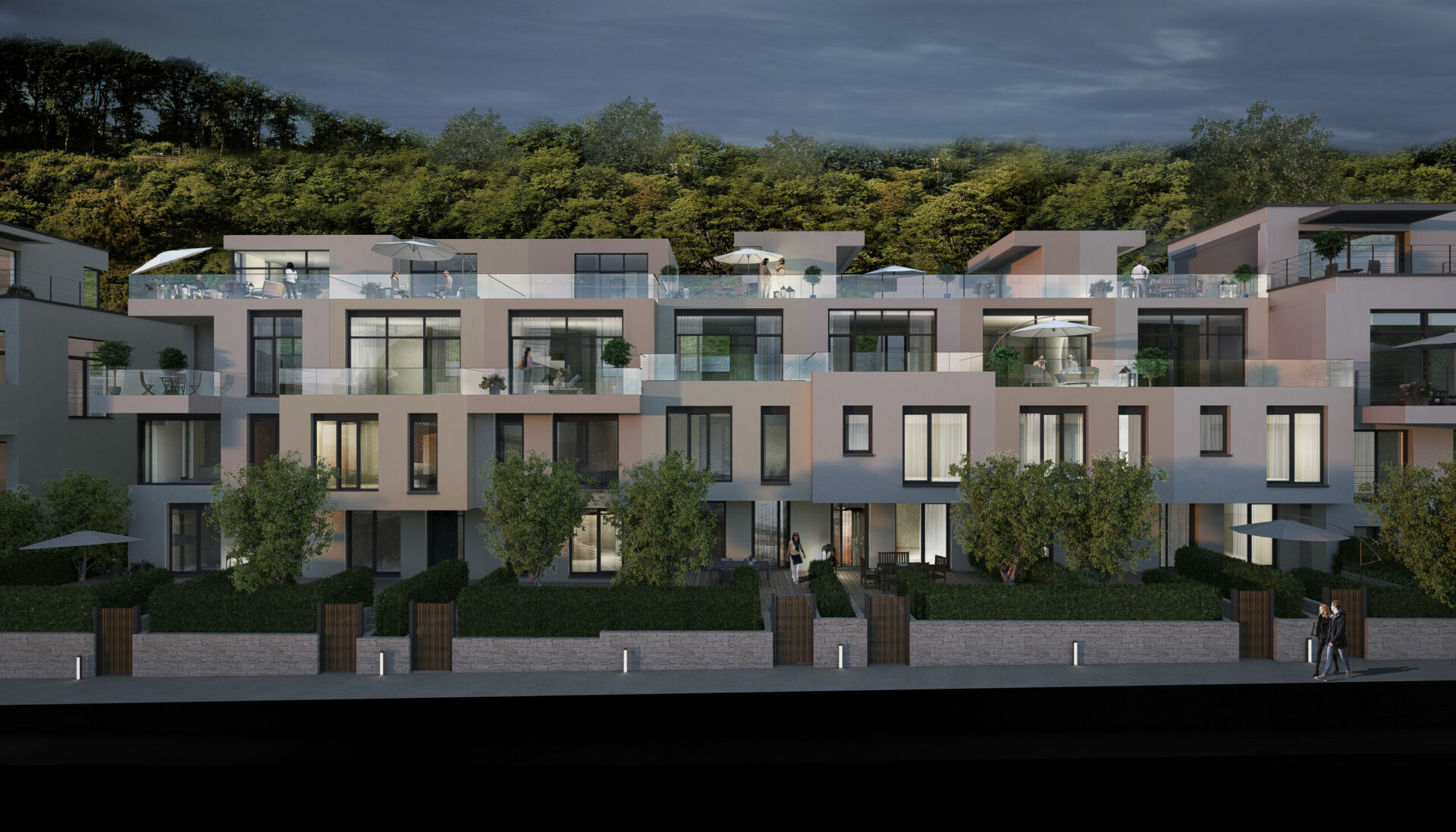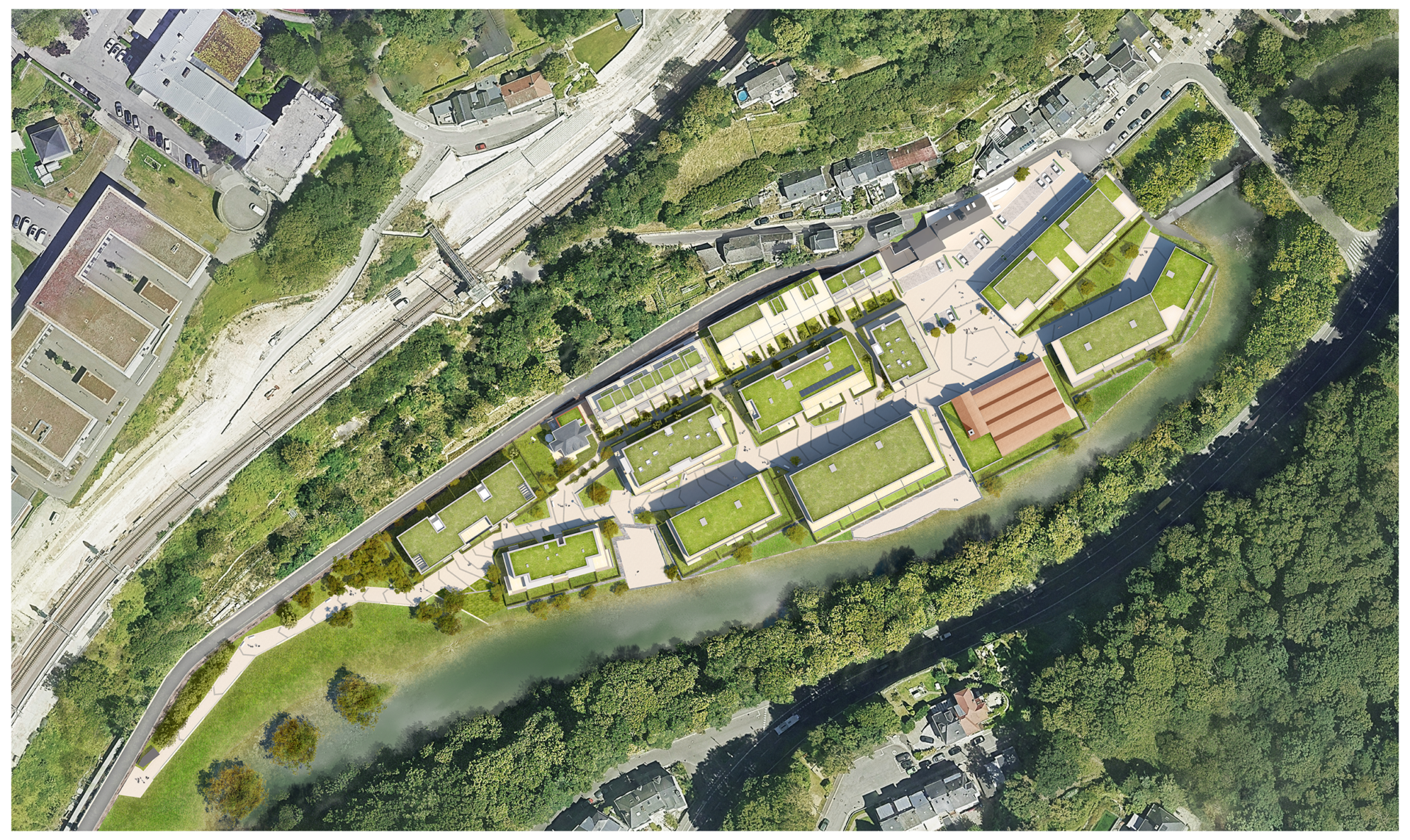when a former industrial site with heritage value is redeveloped into a preserved mixed use eco-district
when a former industrial site with heritage value is redeveloped into a preserved mixed use eco-district

Located near the centre of Luxembourg City, along the river Alzette, “Polvermillen” is an abandoned former textile industrial estate. Located at the bottom of a valley, the site, characterised by a steep slope, required decontamination and the preservation of 4 industrial structures with heritage value (about 30% of the buildings on the site). Renovated to their original state, they are being reassigned as new residential or tertiary spaces.


| program | redevelopment project for a former industrial site converted into an eco-neighbourhood, with 214 residential units, service sector premises & local shops |
| client | Allfin/Immobel |
| address | "Polvermillen" site • rue du Fort Dumoulin • 1425 Luxembourg |
| building type | live |
| status | under construction |
| expertises | |
| offices | luxembourg |
| size | 27.300 m² |
| team | • architect: assar + Ballini Pitt & partners • landscape architect: assar • stability engineer: Milestone/Luxcec • special techniques engineer: Felgen |

The redevelopment project was designed and researched in the context of a Special Development Plan drawn up by the Luxembourg office Ballini, Pitt & Partners. Entrusted to the developer Allfin-Immobel, this has enabled the construction of an eco-district mainly dedicated to housing (214 residential units constructed with a wide variety of finishes and configurations: houses, lofts, studios, flats, penthouses, etc.). The operation is based on a site plan that structures the spaces by distributing the buildings along a longitudinal axis, parallel to the river Alzette, and around a square designed as a major articulation.
In order to maintain a diversity of architectural expressions in keeping with the character of the site and the district, the project owner called upon two practices: assar was entrusted with a complete mission for the external developments and half of the buildings, i.e. two historical “entities” to be reallocated, and eight lots to be built. The other half of the buildings was entrusted to Ballini Pitt & Partners. The architects based their design on spatial, social and environmental criteria.
mass plan

A series of design studies, particularly on the modulation of the pavements and planted areas, was carried out to establish consistency throughout the site. Specific elements such as lighting and urban furniture have been integrated into the plan. The aim is to give this inner block an urban park orientation in line with the “car-free” eco-district concept. The latter involved specific studies for the management of natural areas and green spaces, as well as energy, water, and waste management. It also entails the creation of a comfortable and safe living environment. Particular attention is therefore paid to the quality of the convivial spaces, to the control of parking areas, and to the access routes in the site, which favour soft traffic. A system of pedestrian roads, which can be driven on an exceptional basis (fire brigade, removals, etc.) has been defined.
• in progress
want to know more about assar or contribute to its continuous development